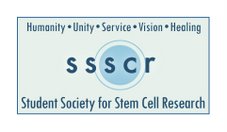New riddle in scandal of Korean who 'faked' clone research
A NEW analysis says the disgraced Korean stem-cell scientist Hwang Woo-suk actually did reach a long-sought goal. It is just not the one he claimed.
The new study suggests Dr Hwang and his team produced stem cells - not through cloning as they contended - but through a different process called parthenogenesis. That, too, is an achievement scientists have long been pursuing.
In 2004, when Dr Hwang and his colleagues at Seoul National University announced that they had produced a human embryo through cloning and had recovered stem cells from it, the news made headlines around the world.
Two years later, their research and a later paper were declared frauds by a committee of his university. The stem cells were not produced by cloning, the committee said, but it was highly likely that they came about through a much different process called parthenogenesis.
In parthenogenesis, an unfertilised egg is stimulated to start dividing as if it had been joined by sperm and for a while develops under the control of its own DNA. Some species, such as sharks, can reproduce this way, but human eggs cannot develop long enough to make a baby.
In cloning, by contrast, an egg's DNA is removed and replaced with genetic material from a donor. It is then stimulated as in parthenogenesis, but it develops under the control of the donor's DNA.
Scientists have long hoped to use parthenogenesis to produce stem cells. Like cloning, parthenogenesis could provide stem cells with a genetic match to a person - in this case, the woman donating the egg. That, in turn, could be useful in studying the basic biology of diseases and perhaps in creating tissues for transplant treatments.
The first scientific paper to report stable populations of human stem cells obtained through parthenogenesis appeared only a month ago.
In the paper published online in the journal Cell Stem Cell, an international team of scientists says Dr Hwang and his colleagues actually accomplished the feat. This was borne out by the research behind their discredited 2004 paper.
Dr George Daley, of Children's Hospital Boston and the Harvard Stem Cell Institute, and author of the new genetic analysis, said the examination of Dr Hwang's stem cells establishes this conclusion with "as close to certainty as you can come to in biology".
He and colleagues started by analysing mouse stem cells generated by cloning or by parthenogenesis. They found that parthenogenesis leaves a distinctive signature in the DNA.
That same signature appeared in DNA from Dr Hwang's stem cells, they reported.
It's "unmistakable"
Kent Vrana, of Pennsylvania State University, who studies the use of parthenogenesis to produce stem cells, agreed the new paper establishes that Dr Hwang's line came from that process.
"While there has been some controversy about that in the field, this paper, I think, resolves that question," said Mr Vrana, who had no role in Dr Daley's research.
Dr Hwang was dismissed from Seoul University in 2006 and now heads a privately funded laboratory.
He has turned down recent requests for an interview.
In his 2004 paper, he and his co-authors addressed the possibility of parthenogenesis.
They wrote that they could not completely rule parthenogenesis out, but they presented evidence to support their claim of cloning.
So what happened? Were they fooled? Or were they lying?
Mr Vrana said he does not know. It is possible, he said, that the Korean researchers did not realise what they had done because they handled a lot of eggs in a technically tricky experiment.
Dr Daley, who visited Dr Hwang's university lab before the scandal broke, said: "We just don't know, and this is one of the curious and provocative questions that may go unanswered."
FALL OF A PIONEER
ONCE hailed as a stem cell pioneer and treated as a national hero in South Korea, Hwang Woo-suk was discredited last year.
Revelations of ethical lapses led to his admission that evidence had been falsified for some of his academic papers.
However, Hwang has insisted the data was faked by junior researchers who deceived him into believing the results were real.
He is now on trial in a criminal court for fraud, embezzlement, ethical breaches and other charges.
He has claimed some of the money he is accused of taking was used in an attempt to buy a frozen woolly mammoth from the Russian Mafia.
Related topic
- Cloning & stem cell research
http://news.scotsman. com/topics. cfm?tid=10
This article: http://thescotsman.
Change settings via the Web (Yahoo! ID required)
Change settings via email: Switch delivery to Daily Digest | Switch format to Traditional
Visit Your Group | Yahoo! Groups Terms of Use | Unsubscribe
__,_._,___










